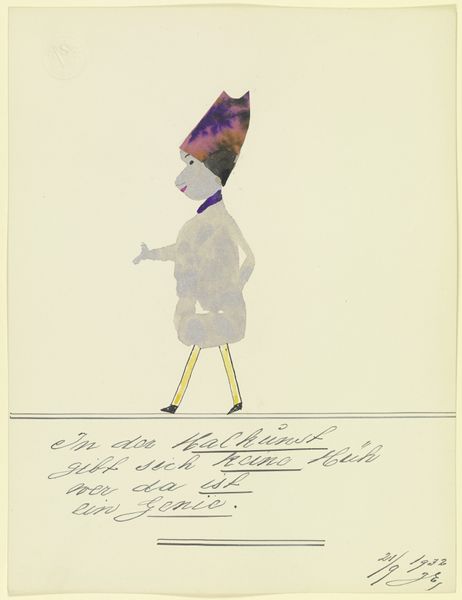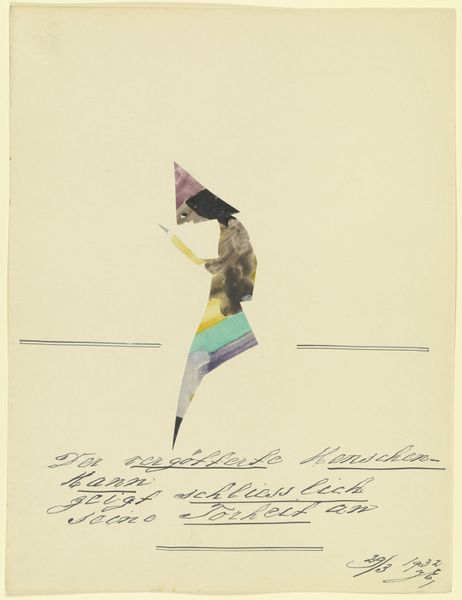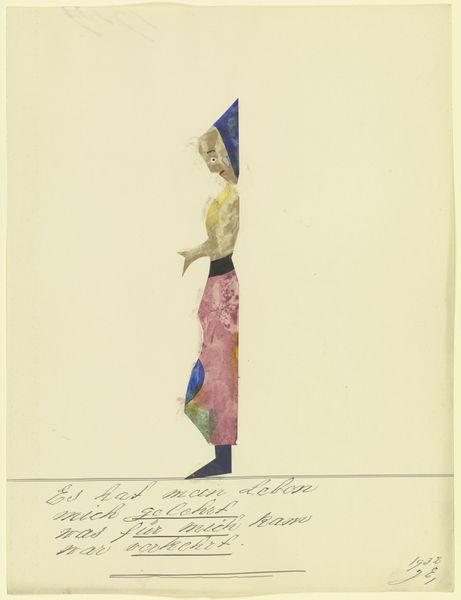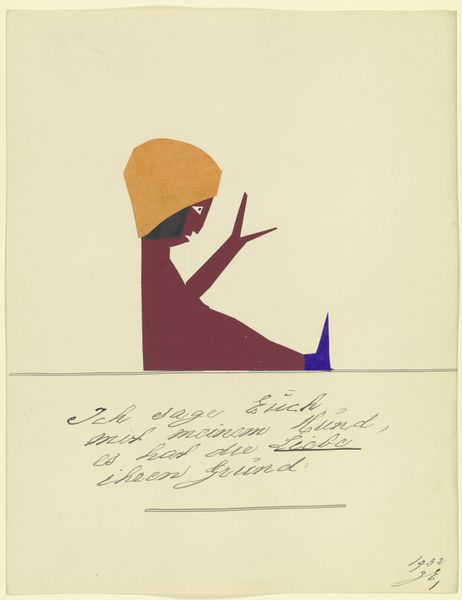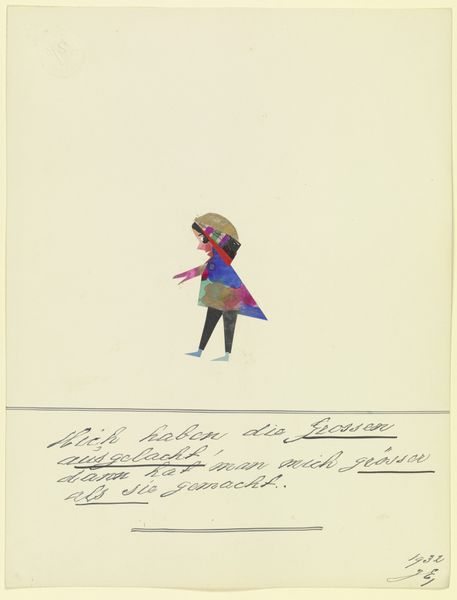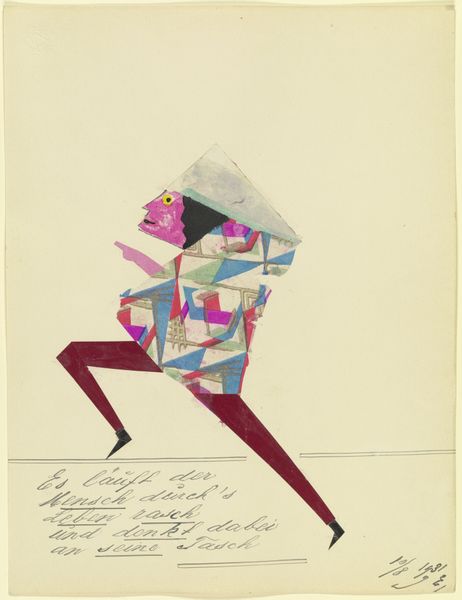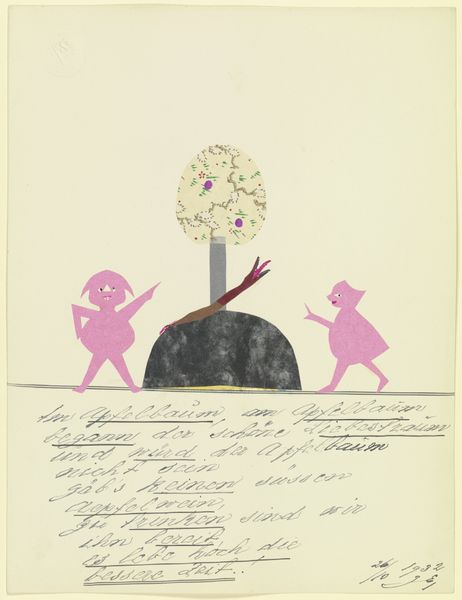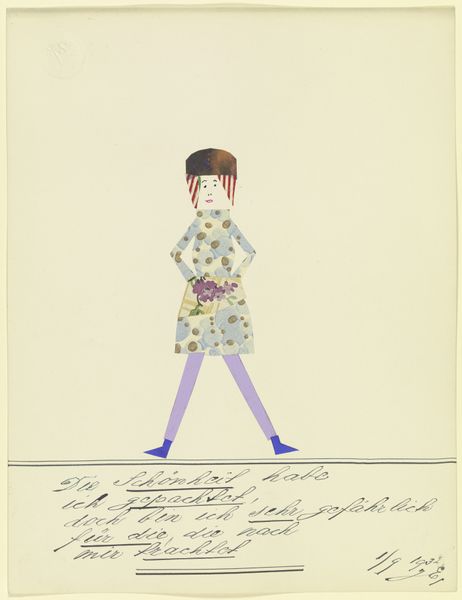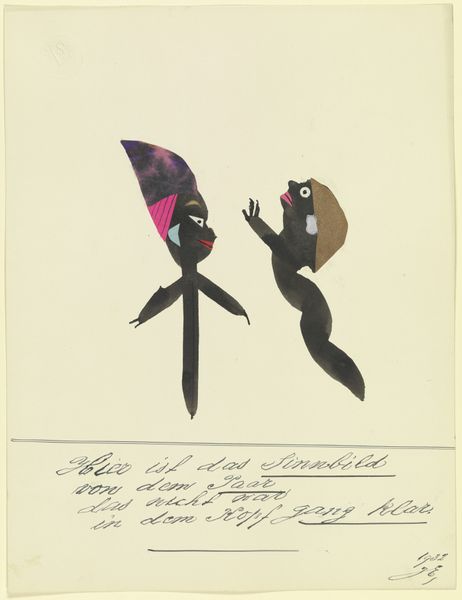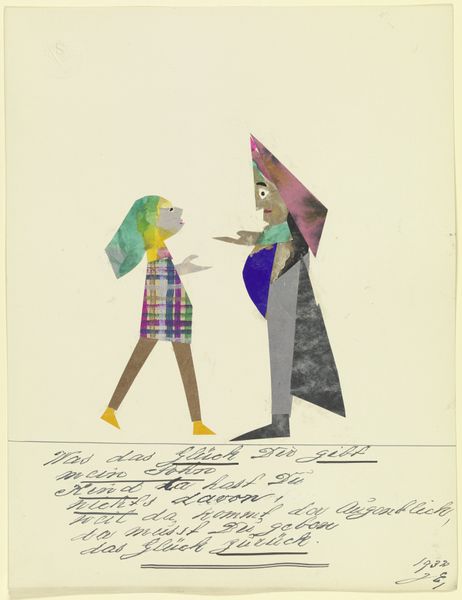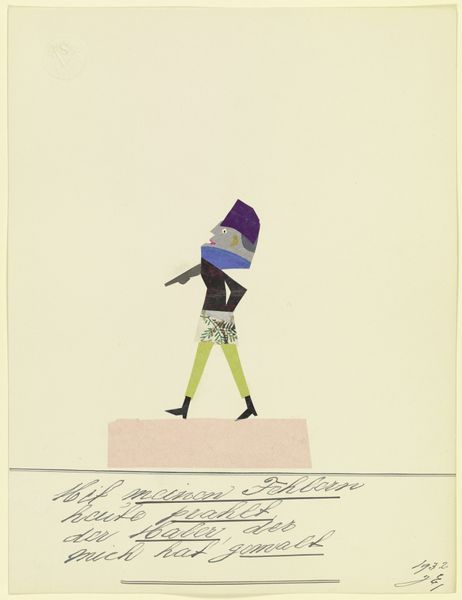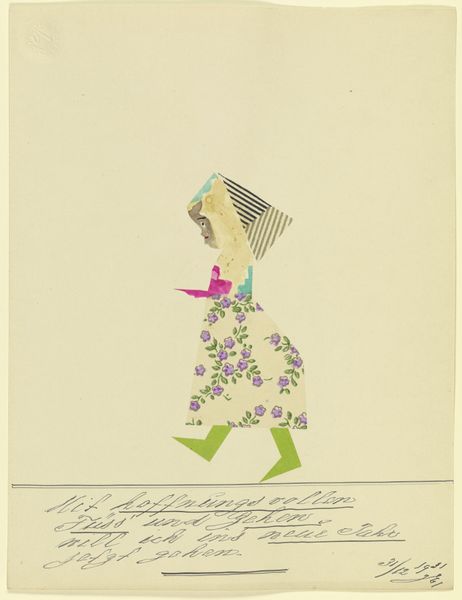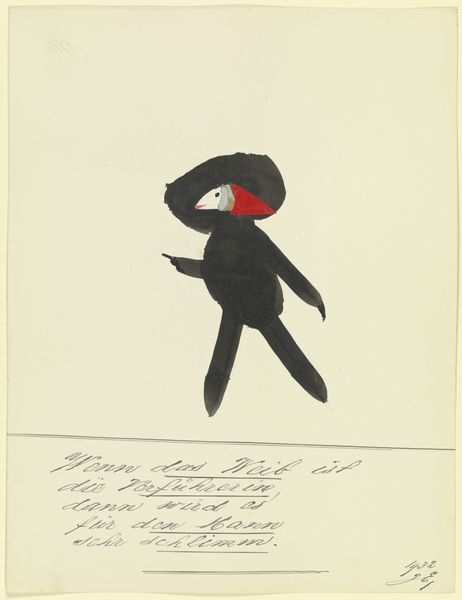
Copyright: Public Domain
Editor: Right, so here we have John Elsas' "17494 ('Here is to see the worry child ...')" from 1932, a collage created with gouache, ink, and paper. There's something almost brutally simple about it, and yet, the face… it’s just incredibly expressive. What jumps out at you when you look at this piece? Curator: You know, that face feels almost… iconic, doesn't it? Like a logo for anxieties we all share. It's that sharp, minimalist aesthetic—like a stylish, sad paper doll skewered on a stake. But what resonates with me is the starkness against that hand-lettered German text. It whispers of fragile realities during that pre-war era, a time of immense social turmoil. Editor: Fragile realities… that resonates. The title, though – “worry child.” Does it suggest a broader social commentary? Curator: I think so. Elsas’ work often mirrored the zeitgeist. The “worry child” might embody the collective apprehension of a nation grappling with economic hardship and the rise of extremism. Or, heck, maybe it’s a self-portrait—we're all a bit of a worry child at heart, wouldn't you say? I mean, what kind of worry do you imagine this kid carries? Editor: Maybe the anxiety of just existing within those historical circumstances. It’s amazing how much emotion he conveys with so few lines. I guess I didn't realize it might even be poking fun at the times. Curator: Exactly! Art can be a spoonful of sugar and a healthy dose of something bitter and truthful too! The raw directness of Expressionism blends with an Art Deco precision to deliver its point. Makes you wonder about your own 'worry child', doesn't it? Editor: Definitely. Seeing it like that opens up so many possibilities in understanding the message it communicates. Curator: It truly is one of those special pieces that can say so much with so little!
Comments
No comments
Be the first to comment and join the conversation on the ultimate creative platform.
